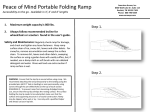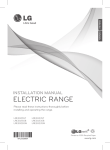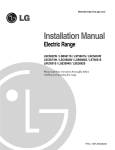Download Policy for Administration in Critical Care
Transcript
Anesthetic Agent Delivery in Critical Care Section: Patient Clinical Policy #: RT-CL-002 Responsibility: Coordinator, Respiratory Therapy PURPOSE To outline the process and responsibilities for the delivery of halogenated agents by means of an Anesthetic Delivery Unit (ADU) in critical care areas outside of the Operating room such as the Intensive Care Unit. POLICY ICU may have patients such as those in status asthmaticus or status epilepticus who require the administration of a halogenated agent (e.g. Isoflurane or Sevoflurane) via an ADU in order to stabilize and treat their condition. The MSDS is to be posted at the bedside for the halogenated agent in use. Patient reassignments can be discussed with in charge personnel to reduce the risk of exposure to staff. Registered Respiratory Therapists (RRT) are required to provide assistance in the initiation, maintenance and discontinuation of agent delivery. The order for halogenated agent delivery must be obtained from a critical care consultant (Anesthesia Background), and/or consultation with an attending Anesthesiologist. Upon receipt of such an order the Registered Respiratory Therapist (RRT) will retrieve the ADU from the OR and begin the set up of the Anesthetic Delivery Unit (Datex Ohmeda S/5 ADU) in ICU. The ADU must be thoroughly checked prior to use. Refer to Appendix A – OR Checklist. Regular monitoring of the patient and equipment must be a minimum of once every 120 minutes. PROCEDURE The 4 Moments of Hand Hygiene must be practiced at all times. The use of the ADU is considered an aerosol generating medical procedure and it is mandatory to wear face mask with shield, and gloves as minimum PPE. (See Routine Practices Appendix A). Refer to Aerosol Generating Policy Set Up Equipment: Datex Ohmeda S/5 Anesthetic Delivery Unit (ADU) w/patient monitor, 6-foot coaxial breathing circuit, 2-Disposable Carbon dioxide absorbent canister Bacterial filter (requires replacement at least once every 4 hours), Anesthetic agent. (Obtained from Pharmacy) Gas sampling and spirometry tubing for anesthetic monitor. 1) An order for halogenated agent delivery is obtained from an ICU consultant Orders are entered electronically in HUGO/powerchart . Orders must clearly state concentration of anesthetic agent. (AA%) Criteria used to change concentration of anesthetic agent must be very clear and objective to avoid misinterpretation. Orders for titration of AA are not acceptable. 2) If a consulting service assesses the patient and requests a change in AA concentration, the order must be confirmed by the critical care consultant. 3) Ensure a bacterial filter is attached between the expiratory limb of the circuit (as labeled on Compact II Block absorber) and the carbon dioxide absorbent canister. 4) Attach an in-line suction catheter to the circuit so as to maintain the integrity of the breathing circuit and thereby reduce the amount of anesthetic agent pollution. Add a Dlite sensor so that the distal (patient) end of the circuit is configured as follows: In-line suction catheter - D-lite Sensor - Short Extension Tube. 5) Obtain a Respiratory Therapy Record of Continuing Anesthesia in Critical Care form. Refer to Attachment A. 6) Power up the ADU and patient monitor. Allow the ADU to run a power-on self-check (3060 seconds). The System Check menu then appears. Select “Manual Check” on the menu to initiate a system check. (A full check can be completed using the E size Nitrous Oxide cylinder located on the back of the machine.) Refer to Section 4 of the Datex Ohmeda S/5 Anesthesia Delivery Unit User’s Reference Manual located on the left side of the ADU. WARNING: Do not start a check of the ADU with a patient connected to the ADU. 7) The RRT (in consultation with the Critical care Consultant) will adjust all initial mode, controls, alarms, etc. to the desired setting on the ADU. Refer to Section 5 of the ADU User Manual to adjust ventilator parameters. Monitoring 1) An ICU consultant must order the anesthetic agent, its delivered concentration, any changes to these orders, and discontinuation of therapy. 2) For any change in AA%, the gas flows (Air/O2) must be set at maximum flow until the Et AA levels have reached the ordered concentration. Once the concentration has stabilized at the desired value, then the gas flows may be reduced back to the usual level of flow. The use of higher flows (8-12 LPM) are recommended and preferred to reduce moisture buildup in the circuit and the machine. 3) At the beginning of each shift, the RRT assigned to the patient must meet with all therapists working within the unit and the RN assigned to the patient, to update all staff on basic operating knowledge of equipment, current settings and daily plan. 4) Monitoring of the patient, equipment and agent must be performed routinely by the RRT assigned to the ICU and pertinent data recorded on the Respiratory Therapy Record of Continuing Anesthesia in Critical Care form. 5) This routine monitoring and management must include: Patient Assessment Assess patient tolerance of therapy, vitals, etc. and document on Respiratory Therapy Record of Continuing Anesthesia in Critical Care form and/or Respiratory Parameter sheet as required. The in-line suction should be used to reduce staff exposure of the Anesthetic agent during circuit disconnect; however inflation of the bellows must occur immediately following the suctioning procedure. If the patient must be removed from the ADU for suctioning, it is recommended 2 persons are present with one professional turning the switch to manual, bagging the patient, while the second professional suctions the patient. Refer to Interdisciplinary Suctioning Guidelines Anesthetic Agent Level Check the liquid level in the Aladin by observing the sight tube located near the cassette’s fill port. The level must be maintained so that the float is positioned between the “Min” and “Max” indicator lines. Exchanging of the cassette involves, disengage the cassette by squeezing the handle and pulling it from the ADU. The full cassette is then reengaged in the ADU. Note: Disengaging the cassette causes the ADU to reset the delivered agent concentration to zero so ensure it is restarted to the prescribed setting when the new cassette is engaged. Filling cassette: Remove cassette from machine. Transport cassette to RT decontamination room. Fill empty cassette under the functioning fume hood. Store open bottle of agent under fume hood for future use. Full cassette may be stored at bedside on ADU or on counter in decontamination room Carbon Dioxide Absorbent A spare canister with fresh absorbent is kept with the ADU and can be exchanged with the one containing exhausted absorbent while the ADU is in use. The integrity of the breath delivery pathway is maintained even while the canister is removed. The absorbent may be exhausted is when the patient’s inspired carbon dioxide (FiCO2) rises to more than 2 mmHg, as measured by the anesthesia patient monitor. Always monitor increases in the FiCO2 when determining the appropriate time to change the carbon dioxide absorbent. Gas Sampling and Spirometry Tubing Check to ensure these remain clear of obstruction. Replace if soiled or wet. The D-FEND water trap must be emptied into the biohazard waste pail if more than half full. NOTE: You must disconnect sampling line while administering any inhaled medication. Bacteria filter Replace the filter attached between the expiratory limb of the circuit and the compact block every 4 hours. It is not necessary to turn off the vaporizer to do this. Scavenger (Once per Shift) Check the gas scavenger indicator at the rear, left of the ADU (behind and below the ventilator bellows) to ensure there is sufficient suction. The ball float in the scavenger flow meter should be adjusted to approximately 1/3 of scale to make certain the scavenger system is functioning properly. To vary the amount of suction it is necessary to adjust the needle valve located near the ADU’s vacuum supply inlet connector. Compact Absorber Water Container Check the water trap located at the bottom of the absorber and empty any collected condensate into the biohazard pail. This water is extremely alkaloid and must be handled with extreme care (gloves, mask with face shield or goggles). This container may be removed while the ADU is in use. Circuit Changes: Circuits should be changed if condensate visible on the inside of the circuit. A pressure test shall be performed after every circuit change. Any water collecting in the tubing must be emptied into a biohazard pail. If no condensate present, as per standard non heated ventilator circuit, circuits must be changed every 30 days. Emergency Precautions for circuit or ADU malfunction RN to turn off ADU (On/Off button is black button, located on bottom right of black console on front of machine) RN to use manual resuscitation bag to provide oxygen and gas exchange for patient RRT to be paged STAT There is no one quick button on the machine to deliver 100% oxygen to patient. RN to contact RRT if: Any RN questions or concerns Patient becomes unstable i.e. decreasing SpO2 Presence of ventilator alarm Water can been seen or heard in the circuit Any questions or concerns RN planning on turning patient, do CXR, or similar activities that may cause potential disconnect Additional Information to be posted at bedside and/or in Bay when machine in use Laminated purple lettered” Isoflurane in use” sign MSDS sheet ADU in critical care tip sheet REFERENCES Datex Ohmeda AS/5 Anesthesia Monitor Operator’s Manual Datex Ohmeda S/5 Anesthesia Delivery Unit User’s Reference Manual MSDS Isoflurane MSDS Sevoflurane Original Effective Date: Revised Date: Reviewed Date: September 2006 August 2014 August 2014




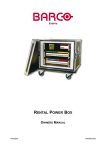

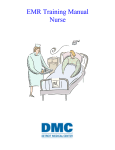

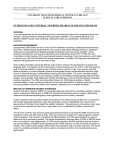
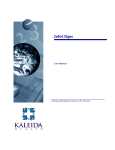
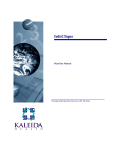
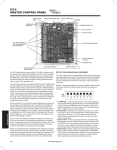
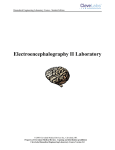


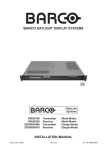
![XLite ToolSet Software [v05]](http://vs1.manualzilla.com/store/data/006304861_1-6990b54c95ba147b0c6f68f733c5e98d-150x150.png)
